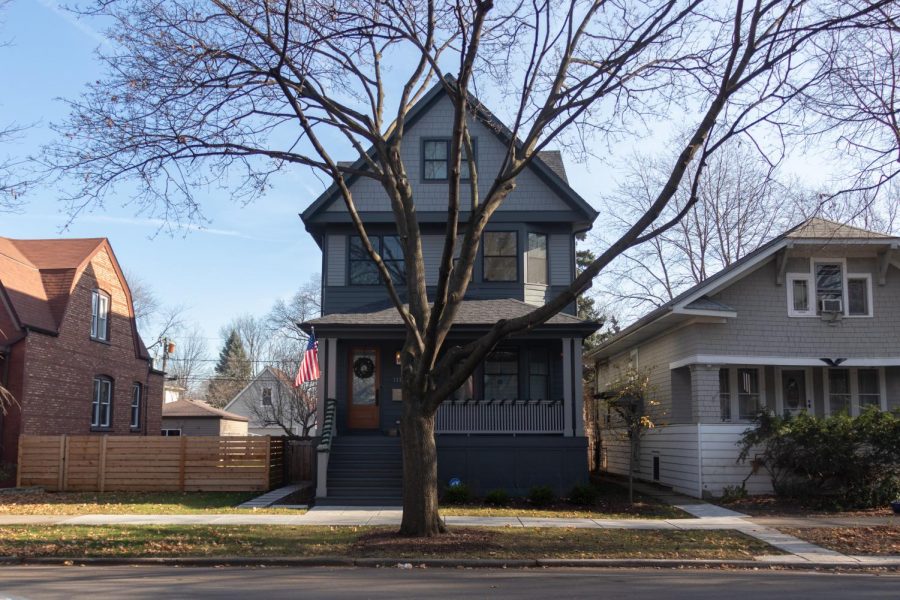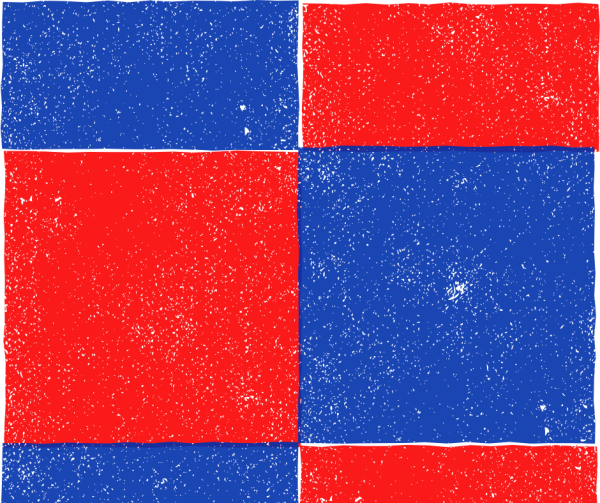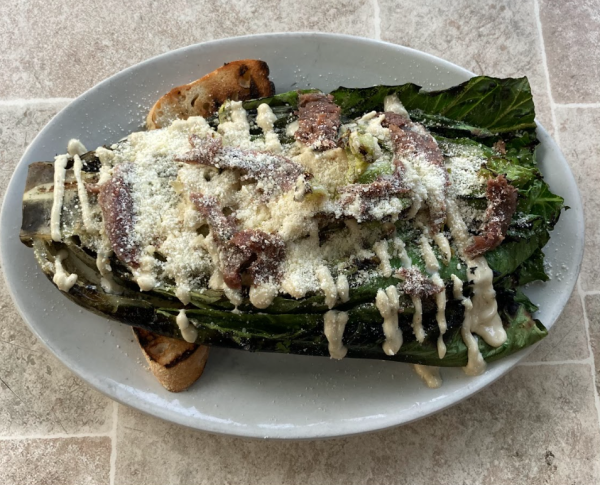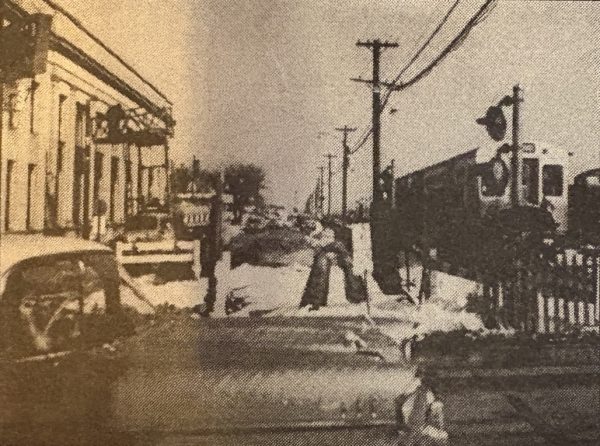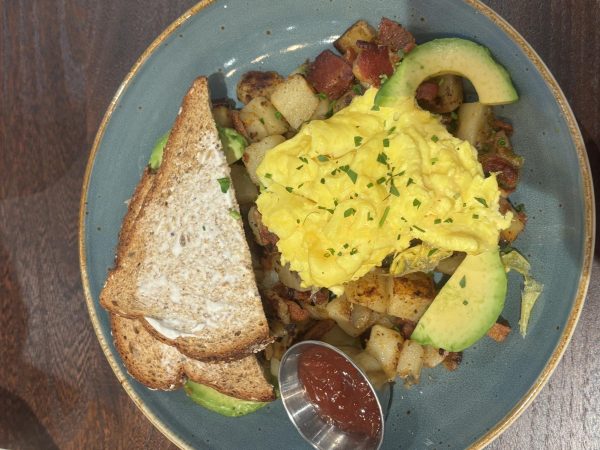Beware of “beautifying” South Oak Park
A new house at 1114 S. Scoville Ave.
Some Oak Parkers don’t know the village continues for several blocks south of the Eisenhower Expressway. Past the bridge, it doesn’t really “look” like Oak Park anymore. Sure, there are some huge, brightly colored historical houses. We also have a lot of old, dirty stucco houses. And there are some in between, like my family’s red shingled two-bedroom bungalow.
What’s important about South Oak Park is that it’s relatively affordable. In a town with Frank Lloyd Wright houses and million-dollar properties, South Oak Park is where many middle-class families live (according to neighborhoods.com, the median sale price of homes was $385,000 in the past year). For families that perhaps cannot afford to send their children to private schools in Chicago, South Oak Park can be an opportunity for them to rent or buy while providing their children an excellent education.
Recently, there have been a few new houses and rehabbed properties popping up around the neighborhood. It was quite shocking for me to hear that a house a few blocks away was put on the market for $1 million. It seems as though every smaller, older house put on the market is quickly bought by a developer. This happened to two houses on the block up from mine. It is happening right now to the house next door to mine. The new houses are always at least two stories and tend to be much more expensive than neighboring houses.
It wouldn’t be an issue if it were just a few new houses. However, according to the April 2019 Wednesday Journal article “South Oak Park the new Bucktown? Local developer says yes,” Mark Meagher of Maher Development believes that South Oak Park “is ready for a continued stream of new homes,” with prices reaching “far beyond” the 1112 S. Clinton house, which sold for $980,000 last year.
People who were hoping to move to Oak Park to provide their children with a better education or community may no longer be able to rent apartments or houses in South Oak Park due to rising property values. Oak Park renters who are looking to buy a house might not be able to afford one anymore. More likely to happen is that the only ones they can afford will be quickly bought by house flippers, who will be able to pay a lot more, and in cash, which is appealing to sellers.
On top of the obvious environmental cost of building these new houses, former Director of the Oak Park Regional Housing Center Rob Breymaier says homes that were “naturally affordable” due to size and age are being replaced by houses that are much more expensive. “It’s real Oak Parkers being priced out,” said Breymaier, who is also a South Oak Parker. He believes this development can tear away at the community, as communities that are gentrified can become more elitist, less equitable, and lose values and identity. While affordability isn’t the most important factor in diversity, gentrification can make neighborhoods less inclusive.
A nice neighborhood is a good thing, but a neighborhood can be desirable and still affordable. Breymaier doesn’t want us down the line to be asking ourselves “What could we have done?” to prevent loss of the neighborhood’s current feel. Once a community loses its culture and values due to gentrification, it’s hard to return to what it once was.
I respect some of the motives behind “beautifying” a neighborhood. There is something to be said about having a beautiful town, and it is something the Village of Oak Park values greatly. I’m really lucky to live in a town with so many beautiful houses. One of my favorite things to do is go to central Oak Park and stare at the huge and gorgeous houses some people are lucky enough to live in.
What’s charming about Oak Park homes is that they are old and bold. Unique (sometimes dated) designs, bright colors, and children’s artwork in the windows are all characteristics of a South Oak Park house. Just like North and Central Oak Park, there are many different architectural styles. The small houses in South Oak Park have so much character and diversity, and many have excellent curb appeal.
The new and flipped South Oak Park real estate giants are almost always different shades of black or grey siding, have overly manicured landscaping, and look unnatural in the sea of charming, colorful, unique small homes surrounding them. Instead of bringing out the personality of an old house to fit the 21st century, many developers tear down the old houses. It’s easy to tell if a house is new, especially in Oak Park.
South Oak Park is a place for artists, teachers, entrepreneurs, and essential workers. My parents fall into these categories, and so do the parents of all of my South Oak Park friends. Our community is really special. While my family likely won’t be pushed out of our house due to rising property values, I have gotten a taste of what it feels like to live in a neighborhood being gentrified.
This is a neighborhood I’ve spent most of my life in. I love the houses, the schools, the neighborhood cats, and the people. There’s a wide range of ages, perspectives, income levels, and ethnicities. Neighboring families on my block often get together for impromptu potluck dinners in the warmer months. It’s sad to think what the neighborhood might look like in five, 10, or 20 years.
In the past, it’s taken a lot of work and a concerted effort by the Oak Park Regional Housing Center and the late Bobbie Raymond, the founder of the center, for Oak Park to remain the diverse and affordable town it is today. I hope this effort isn’t thrown away because, as Meagher said, “South Oak Park has more flavor, and more of an urban and hip feeling than other parts of town.”
I know South Oak Park must be an exciting and lucrative place for developers and house flippers. However, every new house represents one family who cannot move here because it is too expensive. What could seem like a helpful investment in a community is actually attacking the culture and values that built the community in the first place.

